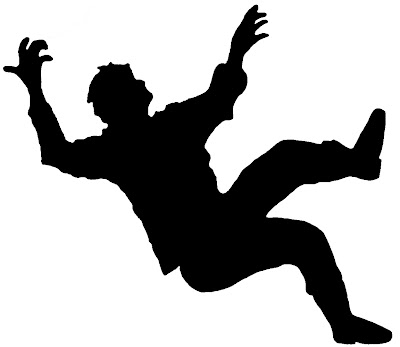Falls among elderly lead to early death and disability
By Dr. Marcella Ziska
Falls are a leading cause of accidental death and disability among older Americans. In fact, over 60% of all accidental injury deaths in the elderly are the direct result of falling. Of the seniors who end up hospitalized as a result of a fall, 40-50% will end up entering a permanent care facility and lose most of their independence.
As more Americans are getting older, accidental falls are taking a costly toll on our health care system, and on the family members who must care for those who are injured.
The estimated cost of health care directly related to a fall is $6-8 billion annually.
The reasons why seniors fall can be complex and confusing for doctors, family members, and for the victim of the fall. Many times it's difficult to figure out what happened.
The Centers for Disease Control and Prevention (CDC) and other leading health authorities state that prevention is the best way to protect ourselves and our aging family members from being harmed in a fall.
Why are the elderly at risk for falling?
Declining vision.
Mix of Rx medications and over-the- counter medications, including alcohol, leads to impaired movement and ability to think clearly.
Weakness in lower limbs from lack of activity, or from certain diseases.
Chronic pain and reduced range of motion (arthritis) affecting body balance.
Blood pressure too low when moving from seated to standing.
Balance control by the nervous system declines (Vertigo).
Improper footwear.
Obstacles left in common walking areas, or slippery walking surfaces.
Middle of the night bathroom trips.
Forgetting to use walking aids, or using them improperly.
Falls in the aging: what's the common theme? Posture & Gait
Almost all falls are caused by multiple problems. But the body's control of posture and gait (walking) play a role a majority of the time.
Posture control involves a complex system of signals from the brain to the body, and from the body back to the brain. It includes: spinal reflexes, information from vision, information from the equilibrium system of the body (the vestibular system) and information from the "sensing" systems in our skin and muscles.
Posture can also affect our gait, which is how far we stride, how fast, and the rhythm (speed) at which we move.
For many different reasons, the control of our posture, and the control of our gait begins to break down as we age. That doesn't mean falling is "normal," it just means it's more likely to happen.
Anything that improves our body posture, strength, and symmetry can potentially help improve our balance. Improving balance can help reduce the risk of falling.
What improves balance?
Strengthening muscles: specific exercises that work the leg and feet muscles involved in standing and walking can help our balance.
Stimulating the "sensing" part of the nervous system: Unique approaches to stimulating the "sensing" part of the nervous system are being used across the United States. Vibration boards and unique exercise pads stimulate the proprioceptive part of the nervous system, the system that knows our position.
Improving spinal balance: Misalignments in the spinal column, especially in the balance between the head and the neck, force our bodies to adapt to an unbalanced and stressed position. Signs of this disturbance include:
a head tilted to one side or carried too far forward
uneven shoulders
uneven hip height
uneven leg length
straightened curves in the neck
carrying more weight on one side of the body than the other when checking on bilateral digital scales
We can unlock this "lockdown" by correcting the way the neck is carrying the heavy weight of the head with gentle upper cervical chiropractic care (NUCCA). The goal is to get the "head on straight" and take stress off the spinal column. With this approach to spinal balance:
leg length balances
hip heights even
the head is straighter
balance is more equally carried by the feet
Upper cervical chiropractic as a solution for fall prevention
Due to the gentle nature of the upper cervical chiropractic adjustment, it is usually indicated for senior adults. Because of its to ability to improve spinal balance and motion, and because it often results in less pain and better range of motion, this form of chiropractic care represents an important tool in fall prevention for the elderly.
Dr. Marcella Ziska is an upper cervical chiropractor in Omaha, NE (Body in Harmony Chiropractic Center) who uses the gentle method of the National Upper Cervical Chiropractic Association to analyze and adjust the upper cervical spine. She greatly enjoys serving senior adult patients with upper cervical chiropractic (NUCCA) care.
skip to main |
skip to sidebar
Upper Cervical Care: Healthcare that begins by getting our head on straight.
Upper Cervical Links
- Upper Cervical Care...Learn More
- General info for patients by a patient
- What Time Tuesday: A Patient's Story
- The Power of Upper Cervical Movie
- Upper Cervical Advocates
- Upper Cervical Awareness Website
- An Upper Cervical Doctor's Blog
- Journal of Upper Cervical Care Research
- Upper Cervical Research Foundation




